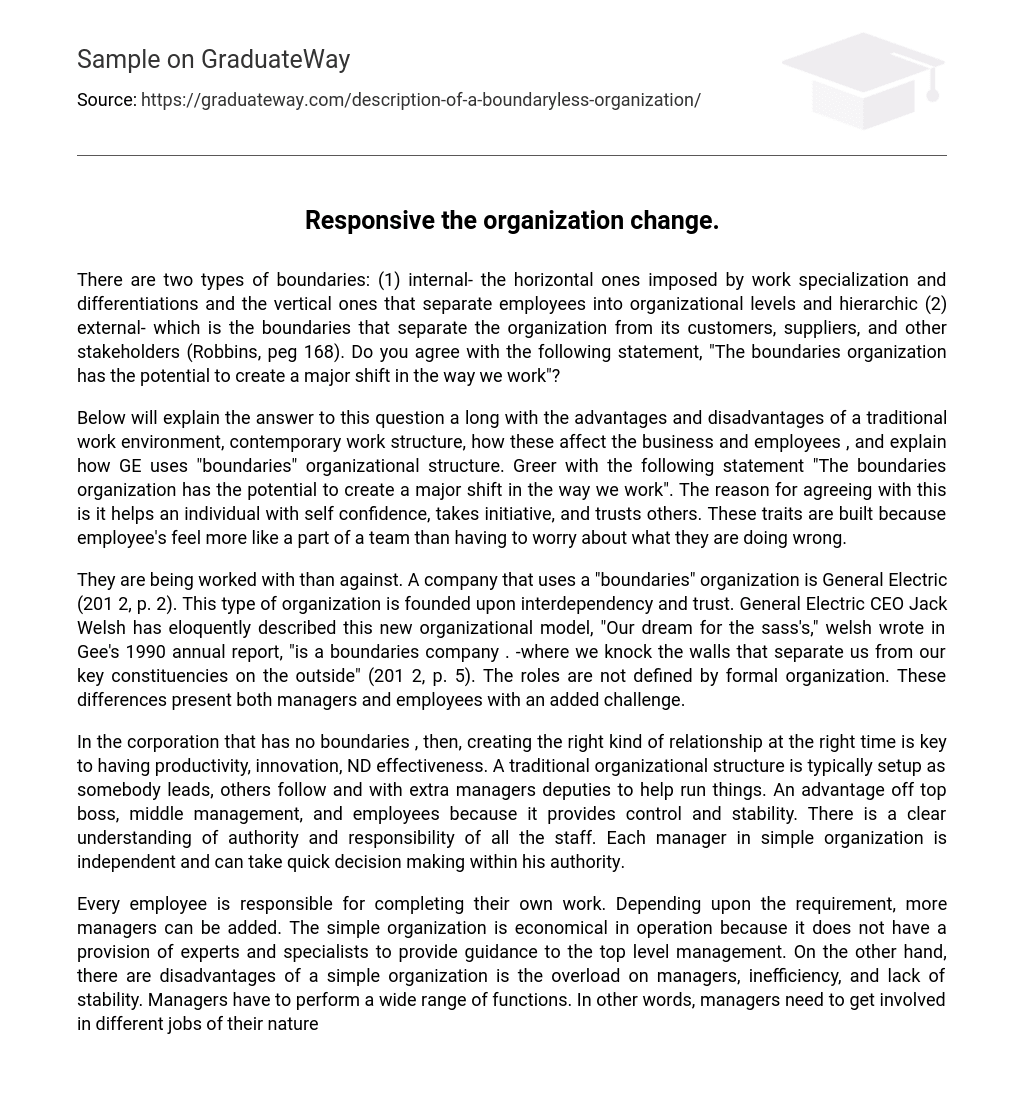There are two types of boundaries: (1) internal- the horizontal ones imposed by work specialization and differentiations and the vertical ones that separate employees into organizational levels and hierarchic (2) external- which is the boundaries that separate the organization from its customers, suppliers, and other stakeholders (Robbins, peg 168). Do you agree with the following statement, “The boundaries organization has the potential to create a major shift in the way we work”?
Below will explain the answer to this question a long with the advantages and disadvantages of a traditional work environment, contemporary work structure, how these affect the business and employees , and explain how GE uses “boundaries” organizational structure. Greer with the following statement “The boundaries organization has the potential to create a major shift in the way we work”. The reason for agreeing with this is it helps an individual with self confidence, takes initiative, and trusts others. These traits are built because employee’s feel more like a part of a team than having to worry about what they are doing wrong.
They are being worked with than against. A company that uses a “boundaries” organization is General Electric (201 2, p. 2). This type of organization is founded upon interdependency and trust. General Electric CEO Jack Welsh has eloquently described this new organizational model, “Our dream for the sass’s,” welsh wrote in Gee’s 1990 annual report, “is a boundaries company . -where we knock the walls that separate us from our key constituencies on the outside” (201 2, p. 5). The roles are not defined by formal organization. These differences present both managers and employees with an added challenge.
In the corporation that has no boundaries , then, creating the right kind of relationship at the right time is key to having productivity, innovation, ND effectiveness. A traditional organizational structure is typically setup as somebody leads, others follow and with extra managers deputies to help run things. An advantage off top boss, middle management, and employees because it provides control and stability. There is a clear understanding of authority and responsibility of all the staff. Each manager in simple organization is independent and can take quick decision making within his authority.
Every employee is responsible for completing their own work. Depending upon the requirement, more managers can be added. The simple organization is economical in operation because it does not have a provision of experts and specialists to provide guidance to the top level management. On the other hand, there are disadvantages of a simple organization is the overload on managers, inefficiency, and lack of stability. Managers have to perform a wide range of functions. In other words, managers need to get involved in different jobs of their nature. This makes it difficult to devote sufficient time to creative functions.
This is why inefficiency is seen. Inefficiency is the lack of provision of experts and specialists in the decision making process. The subordinate level of employees need to have knowledge and authority about their performance which causes lack of stability in enterprise performance. Every organization is different and therefore there is no “best” organizational structure for a company. It is important to understand when establishing a company that how you structure the organization will have implications on how responsive the organization can be to change.
Also, the size of the organization is a key factor of knowing how to structure the organization. The main keys are trust and independence when structuring an organization. When managers and employees know that they can trust one another and each others work you can rely on a great outcome.





